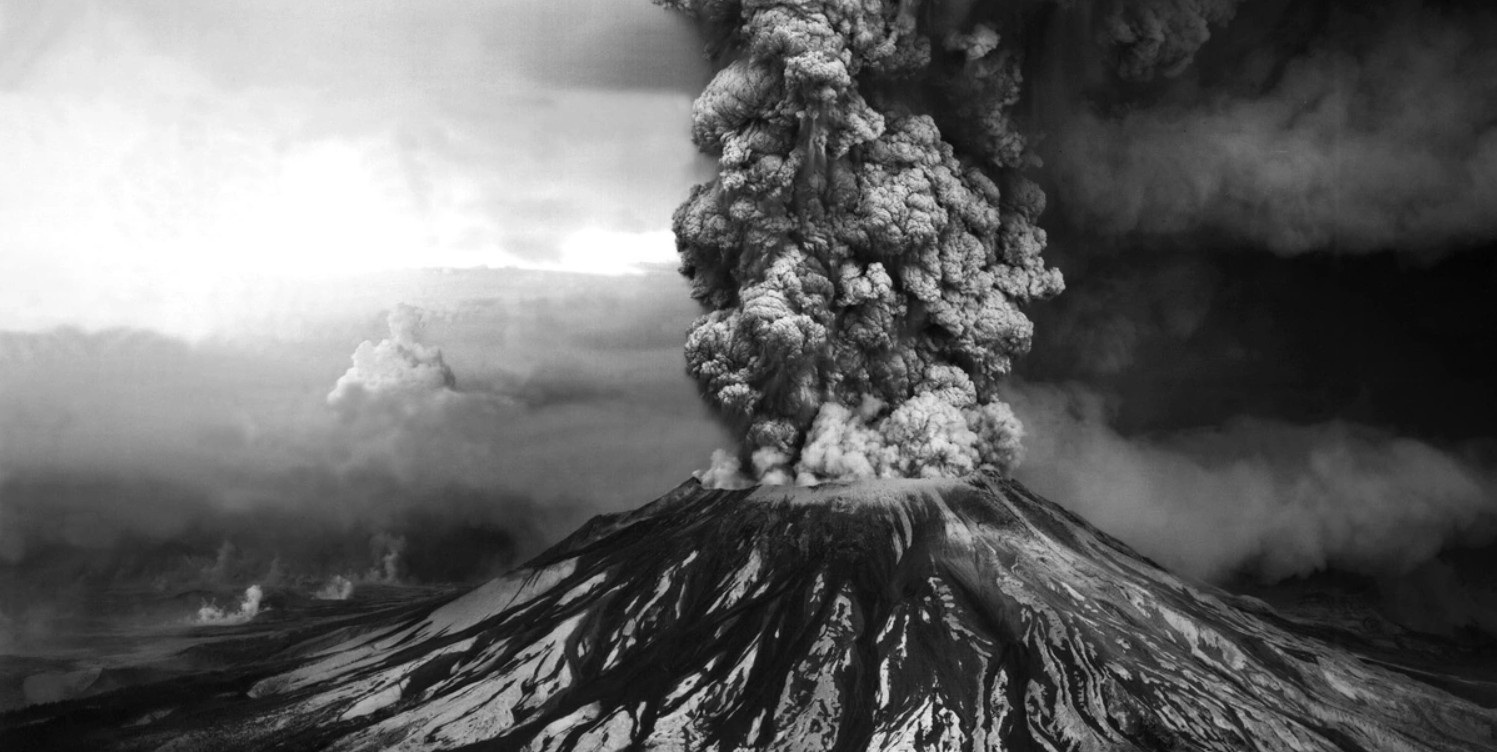Mt St Helens - Episode 2 - Forty Years On

Mt St Helens Eruption. Photo from United States Geological Survey.
If you haven't read Episode 1, find it here
Not much went on from the 7th May to 18 May. As we have already seen, many thousands of small earthquakes were taking place, along with small eruptions. The bulge on the north side of the mountain continued to grow at rates of up to nearly 2 m per day. Clearly magma was rising high in the guts of the volcano, driving the growth of the bulge. It was called a cryptodome, - crypto meaning ‘hidden’ which exactly describes the situation. Geologists continued to monitor the growth of the bulge and seismographs recorded the many earthquakes that were an ongoing feature of the event.
Mt St Helens, along with Mt Rainier and Mt Hood are located in the Cascades of the Western United States. The Pacific plate is being subducted below the continental plate that makes up the US. This subduction extends northwards up through Canada, and then swings westward where it subducts below Alaska, then the Aleutian Islands and ultimately below the Kamchatka Peninsula in Russia which is also known for its volcanoes. Following things even further, the subduction zone then swings southwest where it finds its expression in the island arc of Japan. I think that is good place to stop. The Cascades, Alaska, Aleutian Islands, Kamchatka and Japan all form part of the 'Ring of Fire' that surrounds the Pacific which is characterised by volcanoes and earthquakes. Mt St Helen’s is just a manifestation of the deep subduction taking place hundreds of kilometres below the surface. It was Hugo Benioff who first mapped out the location and depth of the epicentres of these earthquakes and realised that the plates descended to great depth and at angles ranging from 45 to 60 degrees, depending on their age. Kyoo Wadati had also worked out an almost identical theory in Japan, but his writings were in Japanese. However, they are now called Wadati Benioff Zones.
Stay tuned – the big day is some time off. There are some wonderful pictures of the eruption and rescue attempts which I will post up when the time comes.

